Articles Facet Joint Injuries
Facet joint injuries commonly give rise to neck and back pain. Please continue reading to give you a better understanding of these injuries, causes, risk factors and physiotherapy management.
Basic Anatomy
Your spinal column is made up of individual bones called vertebrae and named accordingly to their position in the spine (see below). Your spine is divided into 4 sections:
- Cervical spine (neck) C1-C7
- Thoracic spine (upper back) T1-12
- Lumbar spine (lower back) L1-5
- Sacrum (pelvic area) S1
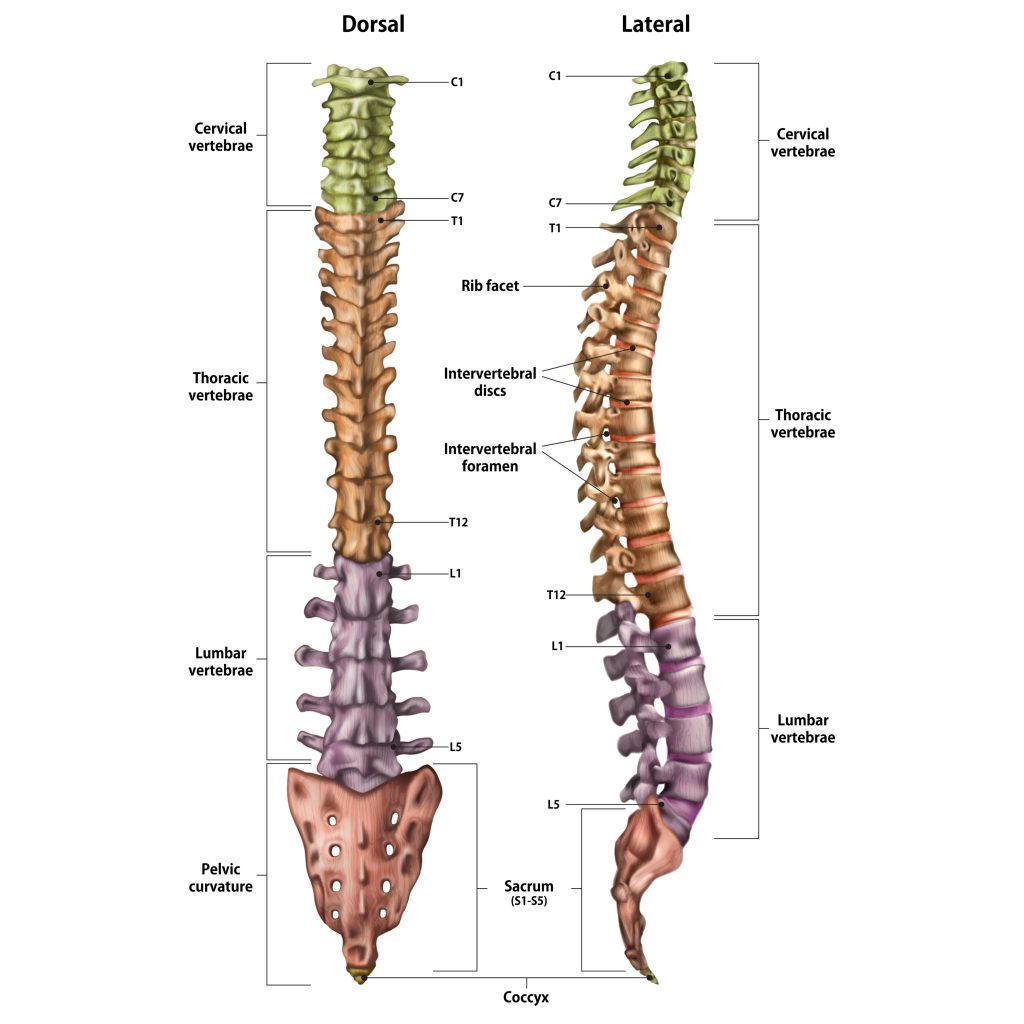
There are 2 joints connecting each adjacent vertebrae:
- one intervertebral joint (connecting to the intervertebral disc)
- a left and right facet joint (aka zygapophysial or apophyseal joints)
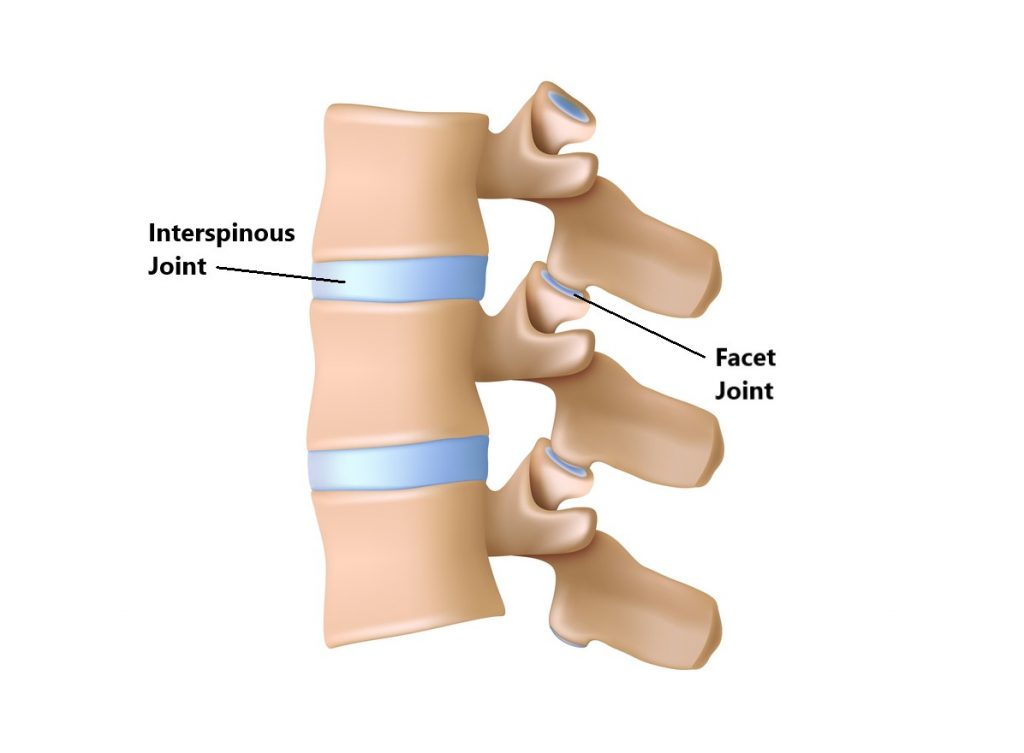
Each vertebral segment has 2 pairs of facet joints
- superior facet joints, connecting to the vertebrae above
- inferior facet joints, connecting to the vertebrae below
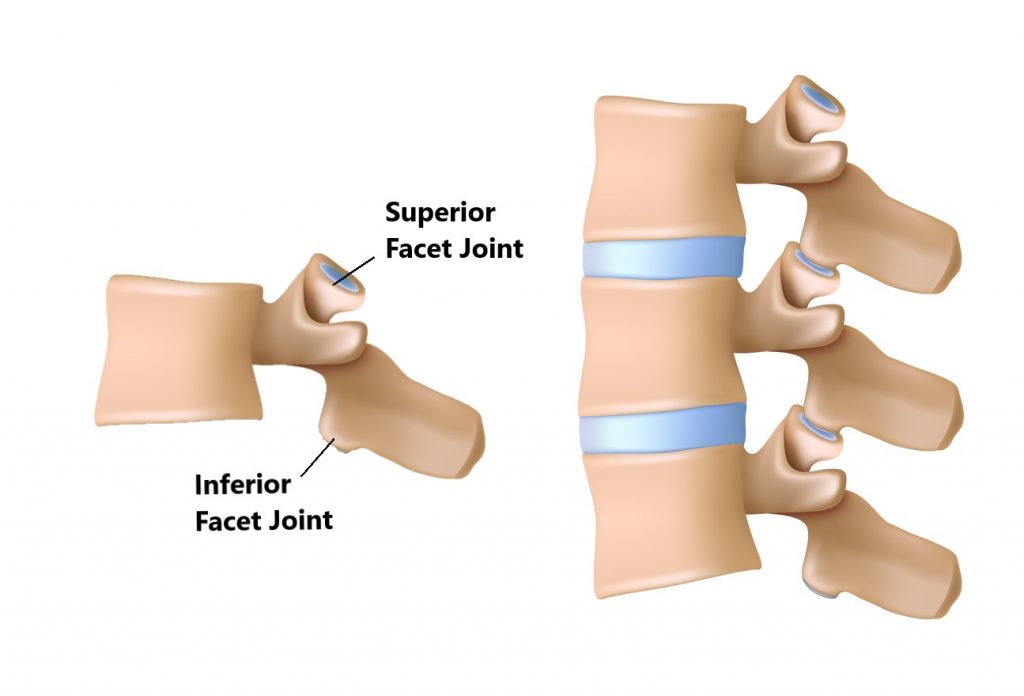
Much like your knee and shoulder, the facet joint surfaces are covered by a thin layer of articular cartilage to allow smooth frictionless movement.
Surrounding each facet joint is also a ligamentous joint capsule to help provide stability to prevent excessive movement.
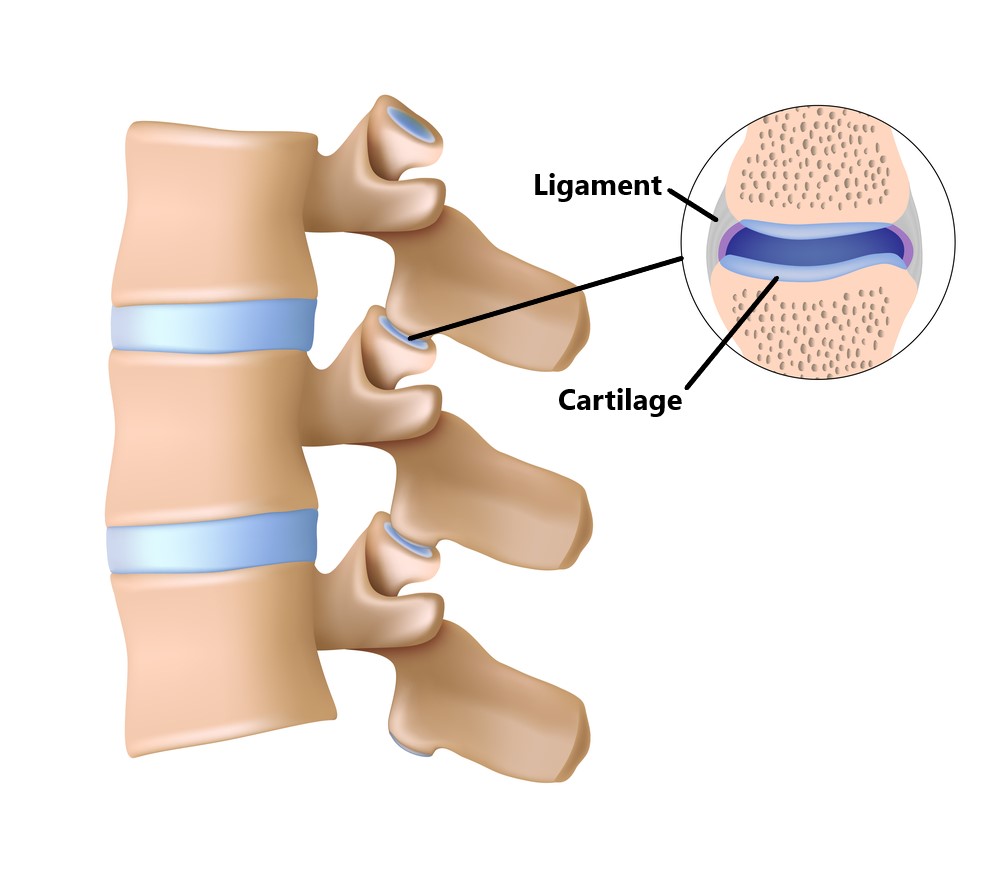
What Do the Facet Joints Do?
Guide and Limit Spinal Movement
The amount of movement varies greatly between each section of your spine. This is largely due to the angle of the facet joints being orientated in different directions. For instance, our necks are naturally a lot more flexible than our upper and lower backs.
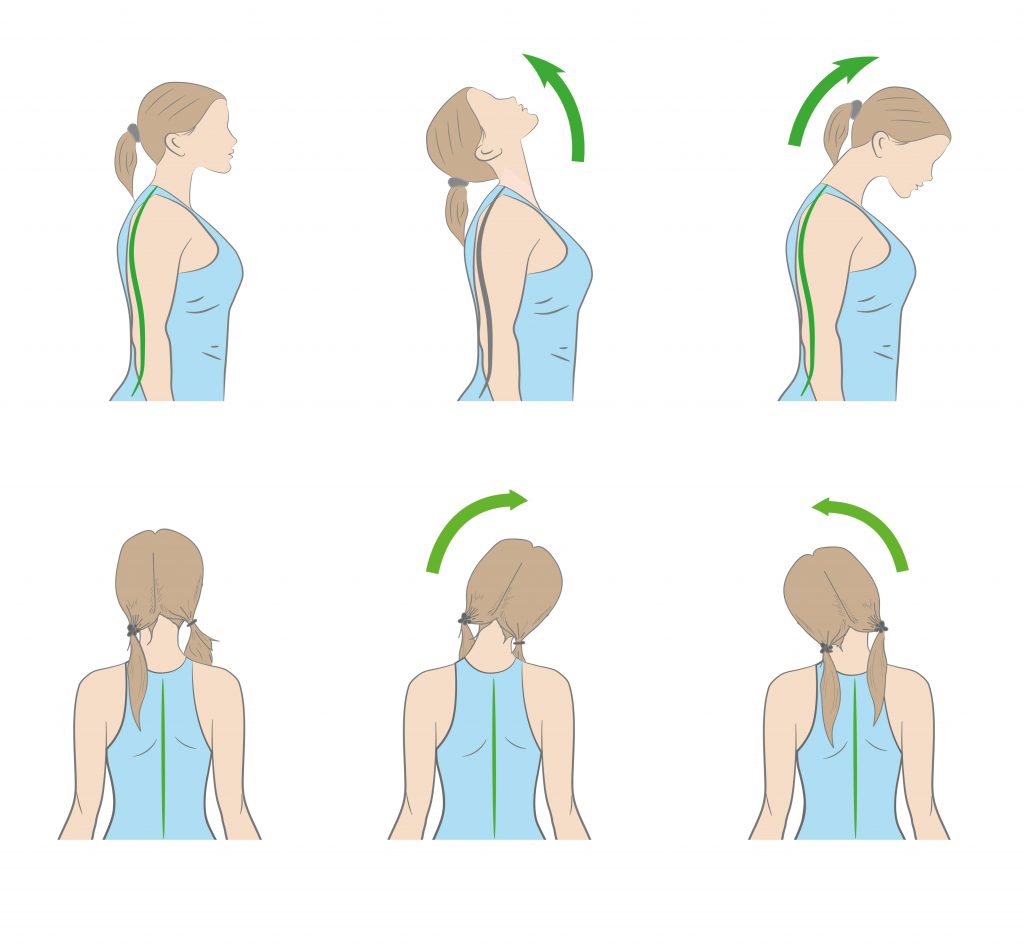
Stability
The facet joints play an important role in stabilising adjacent vertebrae to help prevent “slippage” between segments.
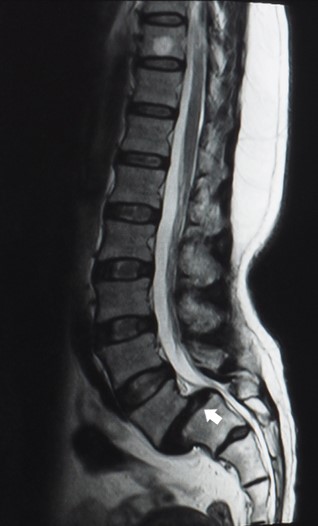
Prevent Spinal Nerve Compression
Openings on either side of your spine (intervertebral foramen) allow the spinal nerves to pass through. The facet joints help to maintain this opening so that your nerves do not become compressed.
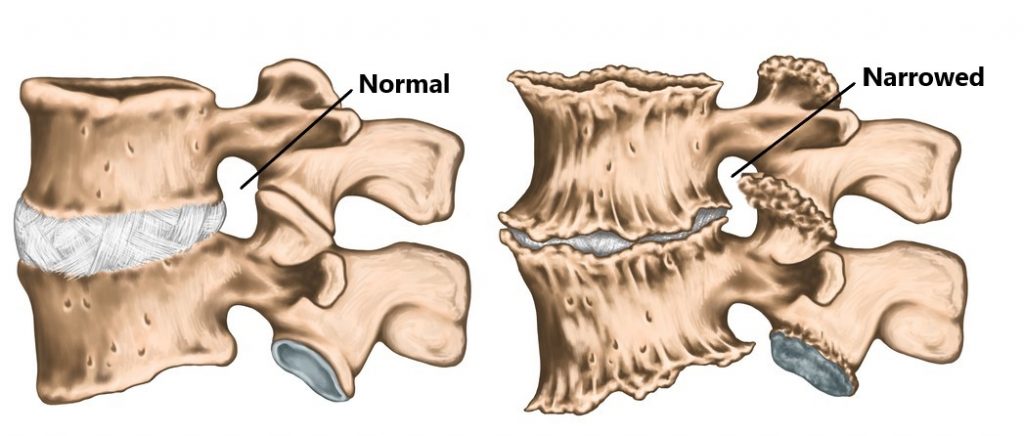
Prevent Spinal Cord Compression
Your spinal cord runs immediately behind the body of the vertebrae through an opening called the spinal canal. The facet joints help to maintain this space so that your spinal cord does not become compressed.
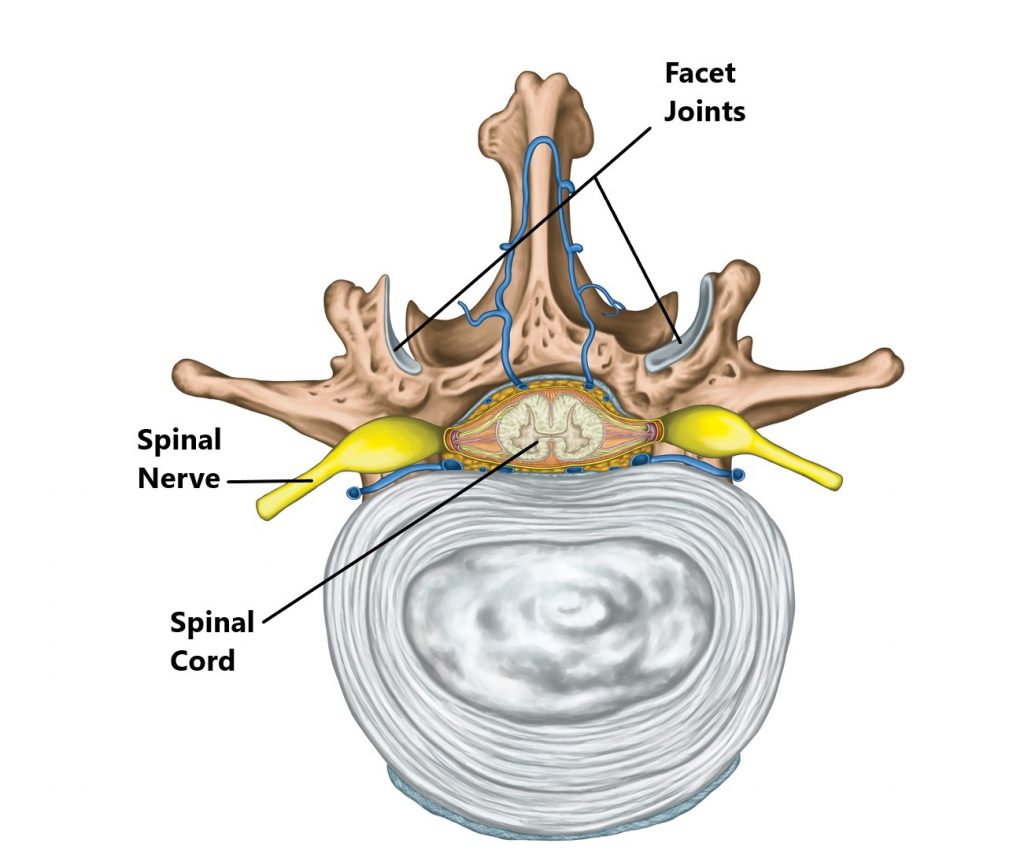
Common Facet Joint Injuries
Facet joint injuries are typically managed with conservative physiotherapy treatment. In the presence of prolonged inflammation a cortisone injection into the joint may be required. Surgery is rarely indicated and normally reserved for situations where there are signs and symptoms of significant neural compression. It is not uncommon to have a combination of 2 or more of the injuries listed below.
Facet Joint Strains
Overstretching of the joint capsule can strain the ligaments and give rise to inflammation and pain. This can be due to sudden acute trauma (i.e. whiplash following a car accident) or overuse (i.e. poor sitting posture at a desk). Over time, repeated facet joint strains can result in excessive scar tissue formation and stiff joints.

Osteoarthritis (OA)
OA of the spine typically refers to wearing away of the joint cartilage between the facet joints. Bone on bone contact can result in joint inflammation, pain and a loss of movement. This is most often observed in older populations.
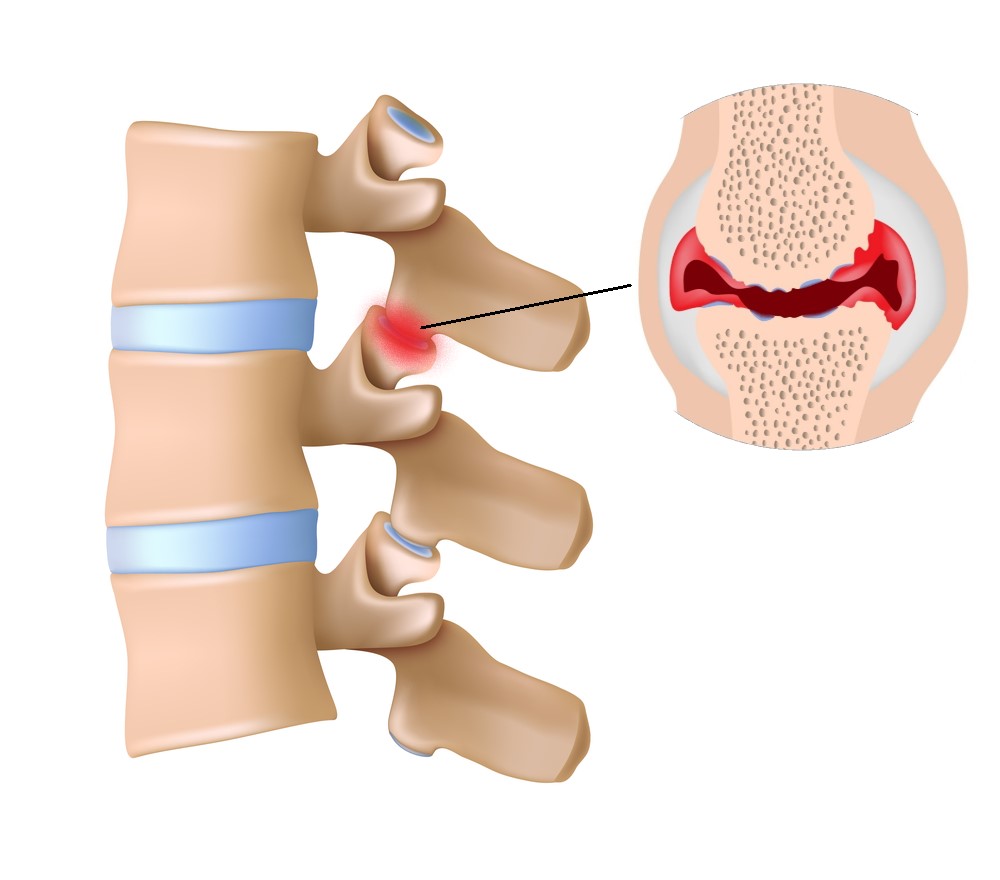
Facet Joint Hypertrophy
Advanced OA can lead to excessive bone formation around the facet joints. Unfortunately, this can decrease the amount of space available for the spinal cord and spinal nerves leading to compression.

Spondylolythesis
The facet joints act as a bony block to help prevent forwards and backwards motion between vertebrae. Damage (advanced OA) or malformation (anatomical abnormalities from birth) of the the facet joints can result in instability and slippage between vertebrae, this is known as a spondylolythesis. Slips are typically graded from 1 (minor slip) – 4 (high grade slip)
Quickly progressing or higher grade slips are of particular concern as there is potential to kink the spinal cord (see Red Flags below), in these cases emergency surgery may be required.

Common Symptoms of Facet Joint Injuries
- localised spinal pain with or without referred pain
- movement restriction (often towards the painful side)
- joint and muscle stiffness
- neural signs into the upper and lower limbs (i.e. burning, pins and needles, numbness, weakness, sensation changes)
- spinal cord signs (i.e. loss of bladder and bowel control, increasing clumsiness and weakness in the arms/legs, sudden sexual dysfunction symptoms into both arms/legs)
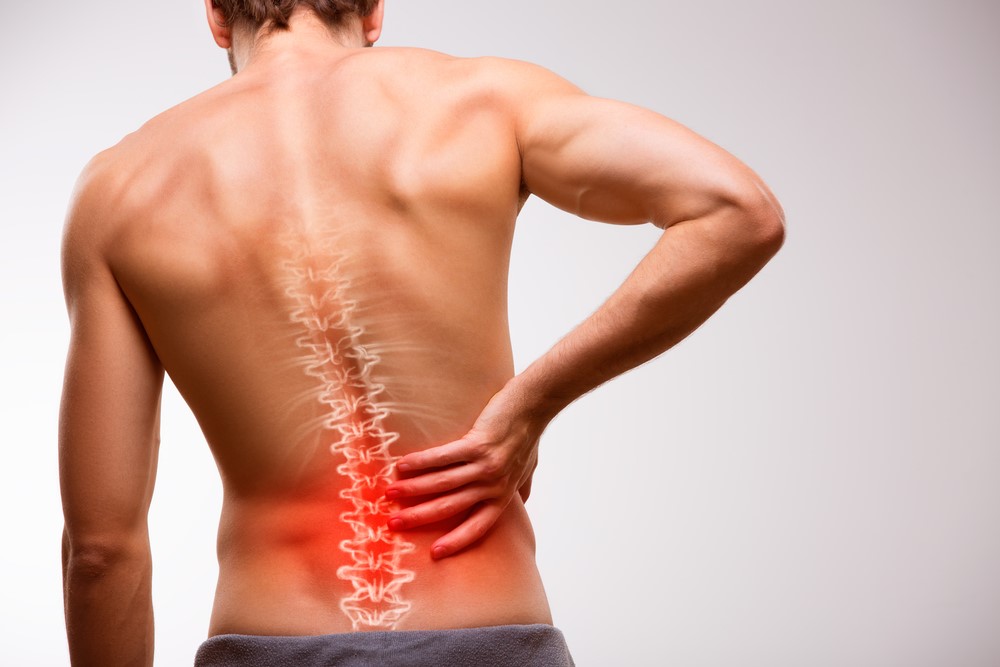
Common Causes of Facet Joint Injuries
- holding prolonged static postures
- prolonged sitting
- prolonged/repeated bending
- lifting in bent positions
- lifting and twisting
- lifting from the ground
- lifting or pulling in outstretched positions
- heavy lifting
- age related degeneration

Common Associated Injuries
- nerve and spinal cord irritations (as discussed)
- intervertebral disc injuries
Facet Joint Injury Risk Factors
- sedentary lifestyle
- lack of physical exercise
- smoking and excessive alcohol intake
- high BMI
- stress, anxiety and depression
- physically demanding occupations
- older age

Diagnosis of Facet Joint Injuries
Diagnosing an IVD injury is based on an individuals clinical presentation and imaging. In many cases imaging is not always necessary.
- Subjective and Physical Examination
- Xray
- CT
- MRI
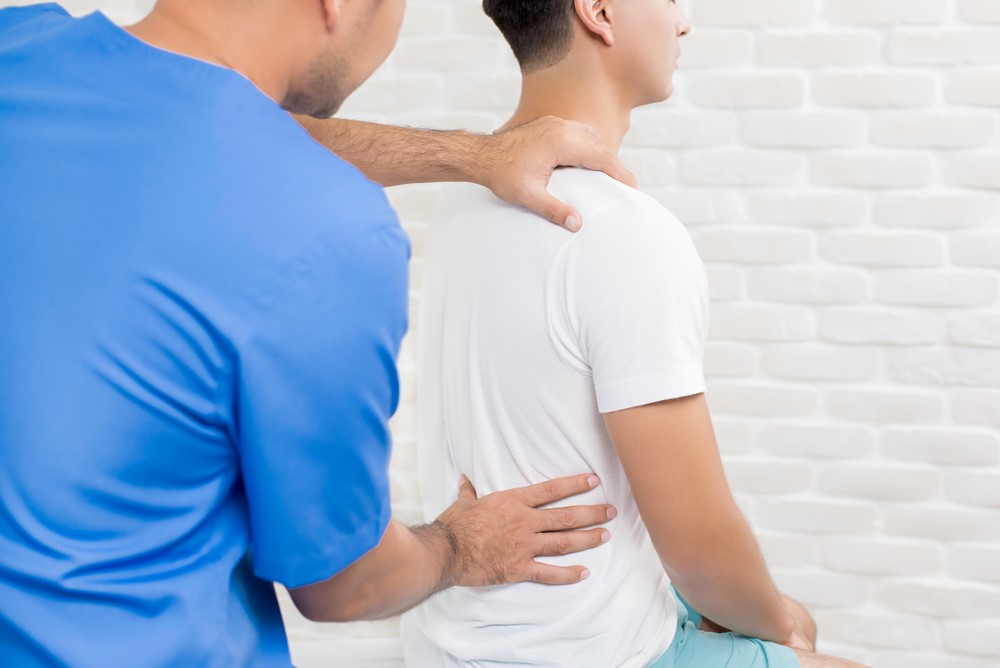
Physiotherapy Management
- Following an acute injury our priority is to minimise the extent of damage, reduce inflammation and decrease pain. Modalities such as RICE (Rest, Ice, Compression, Elevation), strapping, manual therapy and acupuncture may be used
- Provide education regarding the injury, address unhelpful beliefs, identify and modify aggravating factors
- Restore pain free range of motion and return to basic activities. Commence gentle stretches and a walking program
- Restore strength of the core and lower limbs. Commence a graded strengthening program.
- Identify and address aggravating factors, movement and postural issues that may have contributed to the injury.
- Graded return to work, sport and function.

Red Flags!
These are signs and symptoms of more serious causes and require urgent medical review:
- spinal cord signs (as above)
- symptoms are also associated with a lack of balance and changes in gait pattern
- onset of symptoms following trauma (i.e. fall, car accident)
- If you get also get symptoms at night that does not change with activity

Please keep in mind the information provided is general in nature and should not be used as a substitute to consult your treating health professional. If you have any specific questions or require assistance with your individual treatment requirements please do not hesitate to contact MyFamily Physio Mona Vale, Northern Beaches Sydney.
Related Articles